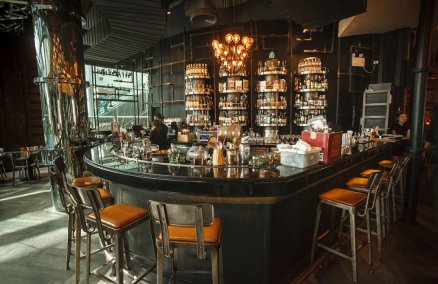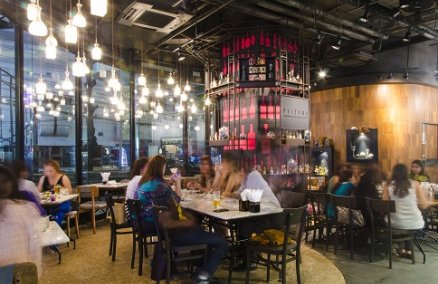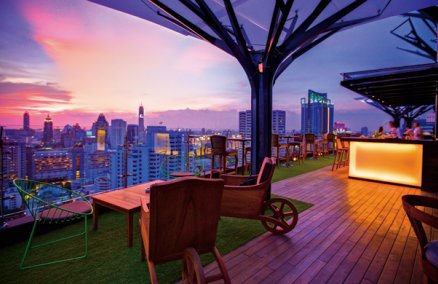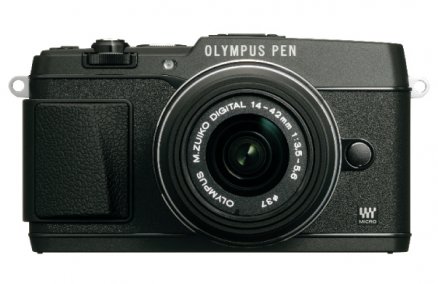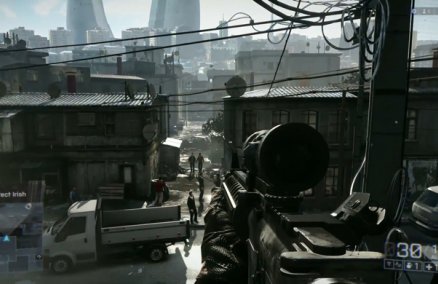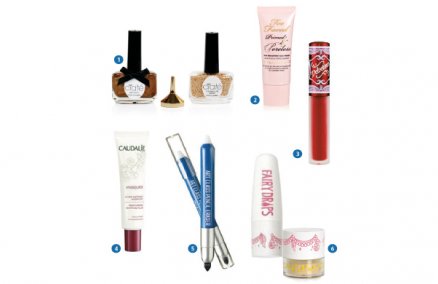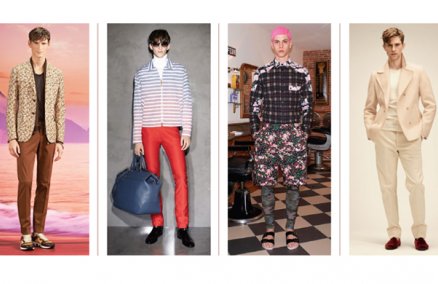We thought we’d save everyone time and the hassle by uncovering some of the funds, grants and scholarships out there for the taking. In all cases, to be eligible you must be a Singaporean, Singapore Permanent Resident (PR) or a Singapore registered organization. For the full, unedited version of this list, visit our website www.asia-city.com.
The Arts | Design | Architecture | Film
IT | Media | SMEs | Tourism
THE ARTS
Get up to $50,000 to create a masterpiece for the stage. $$$
What It’s Called: Project Grant.
Who Offers It: National Arts Council (NAC).
What You Get: Up to $50,000 per financial year, the sum total of its Project Grants and SIA-NAC Travel Grants.
Who is Eligible: Practicing artists and non-profit arts groups who wish to organize specific arts projects or events, including individuals who are recognized by their peers as practicing artists or arts administrators; non-profit registered organizations. The only exception to the above is made for local publishing houses applying under the Publisher’s Grant Scheme.
How They Assess: Artistic merit of the proposal; track record of achieving artistic excellence; commitment to sustaining and advancing the art form in the Singapore arts scene; caliber of artists and personnel involved; demonstration of good planning, sound budgeting and effective use of resources.
Requirements: Application form and relevant budget form (visual Arts Burget Form, Conference Budget Form).
Closing Deadline: At least two months before start of project.
Contact Number/Website: 6746-4622, Eliza Tan 6837-9859, Alan Oei 6837-8465, www.nac.gov.sg/vis/vis02.asp.
Live the life of a bohemian art student in Japan. $$$$
What It’s Called: Takashimaya-NAC Scholarship.
Who Offers It: NAC.
What You Get: Tuition fees, living allowance, return airfare, book and warm clothing allowances up to a maximum of $100,000. Also includes a one-year Japanese language course prior to the commencement of the diploma course.
Who is Eligible: An outstanding student who wishes to pursue a Diploma programme in the applied or media arts disciplines in Japan. Applicants must be aged between 18 and 30 years and should have obtained a GCE ‘A’ Level certificate or a diploma qualification in an appropriate field.
How They Assess: Applicant’s artistic achievement; track record of arts activities and relevant experience; applicant’s creative potential and commitment to contributing towards the development of the arts in Singapore; benefits and value of the arts training to the applicant and to the development of the arts in Singapore.
Requirements: Application form, registration with NAC, supporting materials, including letter of reference.
Closing Deadline: Jul 15 each year.
Contact Number/Website: Anthea Neo 6837-9513, Avin Lee 6837-9857, www.nac.gov.sg/vis/vis03.asp.
Need To Know: Successful candidates are required to fulfill a two-year service commitment within a five-year period, in any work on a full-time basis in connection with the arts in Singapore after the completion of their course.
Top
DESIGN
Become the next Philippe Starck by studying design overseas. $$$
What It’s Called: DesignSingapore Overseas Scholarship.
Who Offers It: DesignSingapore.
What You Get: Tuition fees of up to $40,000 per year, subject to a maximum of $100,000 for study in industrial design, visual communications, multimedia design, fashion, architecture, interior design, landscape design, urban design, or design management from DesignSingapore Council.
Who is Eligible: Applicants must have already gained admission in an institution for full-time undergraduate or postgraduate studies in an appropriate field. Proof of acceptance from the institution must be submitted with the application.
How They Assess: Applicant’s creative and academic potential; potential to be a leader in the design community; applicant’s achievements, track record and relevant experience; passion for design; benefit and value of the studies to the applicant and to the development of the design industry in Singapore.
Requirements: Application form along with other supporting and supplementary documents.
Closing Deadline: Apr 30 each year.
Contact Number/Website: 6837-9686, www.designsingapore.org/Default.asp?Page=180.
Need To Know: Upon returning from their studies, scholars are required to work in Singapore in a design-related field for two years. Scholars need not start their service commitment immediately upon graduation, but can choose to do so over a five-year period.
Invite the world’s design mavericks to judge your very own national design competition. $$$
What It’s Called: Inter-design Development Scheme.
Who Offers It: DesignSingapore.
What You Get: Every dollar in the form of cash raised by the applicant from corporate/industry sponsors will be matched by the DesignSingapore Council up to a maximum of $50,000 per project. Conceptual support is also included.
Who is Eligible: All Singapore-registered or incorporated design or design-related industry support organizations, trade and industry associations, education institutions and companies. Projects to be supported include design platforms such as festivals, conferences, forums, workshops, seminars, exhibitions, competitions, awards and publications. These platforms should be conducted in Singapore.
How They Assess: Whether or not the projects are new initiatives; cross-disciplinary and/or promote cross-organization collaboration; contribute to development of talents for the design cluster, development of design/design-driven products and services, and enhancing Singapore’s profile as an international center for design creativity.
Requirements: Project proposal via Annex A form.
Closing Deadline: Apr 15, Jul 15 and Oct 15 each year.
Contact Number/Website: 6837-9686, Aaron Hung 6837-9346, www.designsingapore.org/Default.asp?Page=163.
Need To Know: The project must commence within three months upon receipt of the Letter of Offer from DesignSingapore Council. Projects should be completed within one financial year.
Top
ARCHITECTURE
Uncover your neighborhood’s architectural heritage by publishing a book. $$$
What It’s Called: A+UDE Promotion Programme.
Who Offers It: Urban Redevelopment Authority.
What You Get: Funding for up to 50 percent of the projected expenditure cost.
Who is Eligible: Private organizations, individuals or groups who with outreach activities in the areas of architecture and urban design. Events can include: A one-off activity open to the public, like exhibitions, tours, lectures, conferences, workshops and forums; a one-off publication of a book, catalogue or brochure, like research reports, monographs, critical analyses, photographic collections and architectural/place guides; a multi-media production for television, film and video media; historical/archival research, theoretical expositions, research by design and site investigations; or design competitions encouraging wide participation and awareness.
How They Assess: The activity should be innovative so as to complement or advance existing theory and practice; of robust intellectual content so as to generate and deepen discourse on selected issues of architecture and urban design; able to cultivate and profile Singaporean works, places or personalities and fuel the growth of the local professional communities. It should demonstrate a strong marketing strategy and commitment to making the work accessible to a wide range of audiences with appropriate publicity and participation channels to stimulate public interest and discourse.
Requirements: Application and budget forms with evidence of co-sponsorship.
Closing Deadline: Jul 14 and Jan each year.
Contact Number/Website: Yap Lay Bee 6321-8179, Phua Beng Kiat 6321-8262, www.ura.gov.sg/cudd/a%2bud/index_flash.htm.
Top
FILM
Launch your career as the next Ang Lee by turning your ideas into film. $$$$
What It’s Called: Film Incubator Program.
Who Offers It: Singapore Film Commission (SFC).
What You Get: $50,000 cash, $50,000 facilities and consultancy. Each year, a maximum of five emerging filmmakers will be selected to turn their scripts into a feature film.
Who is Eligible: Completed scripts for feature film projects of between 75 to 90 minutes; half of creative team must be citizens or PR; preference given to teams without prior feature film projects; preference given to teams demonstrating majority Singaporean and/or Asian technical, artistic and creative content.
How They Assess: Two different stages–Development and Execution. Development: applications assessed by an international script-reading panel as well as by representatives from Media Hive and SFC. Short-listed projects will be developed and led by an experienced industry practitioner (consultant producer), who will go through with the filmmakers the various areas of story development, production planning, directing, casting and marketing planning. Execution: Filmmakers will go through the actual pre-production, principal photography and post-production of the feature film up till the presentation of the final product. The consultant producer will be available for advice and guidance throughout the entire development and production process.
Requirements: Script synopsis, shooting script, production budget, production schedule, cast list, resumes of key cast and crew, post-production schedule, location breakdown and clearances, writer agreements and release, among other things.
Closing Deadline: Throughout the year. The FIP is administered by the Digital Media Academy and an application fee of $50 is required.
Contact Number/Website: 6223 4420, www.sfc.org.sg/funding/funding.shtm.
Travel the World Screening Your Celluloid. $$
What It’s Called: Overseas Travel Grant.
Who Offers It: SFC.
What You Get: Up to 100 percent of the two-way economy class travel costs to attend international film festivals/competitions from SFC. One applicant per film title per overseas event, max. of four overseas events per film title. Up to 100 percent for the following qualifying costs incurred for a single event: production of video/film materials and/or publicity materials for participation at an international film festival/competition, where the cost exceeds $150; freighting of film prints to an international film festival/competition upon selection by the festival/competition organizer, where the cost exceeds $150.
Who is Eligible: All Singapore-based filmmakers who are Singapore citizens or PR involved in creating the selected film.
How They Assess: Objectives of the intended travel and/or production of materials; artistic quality and standing of the film and applicant; merit and prestige of the proposed festival/competition; benefits to the applicant and to Singapore film industry as a whole.
Requirements: Completed application form and CV; invitation letter from festival/competition organizer; information on proposed festival/competition; an estimated cost breakdown for the production of video/film materials and/or publicity materials.
Closing Deadline: One month before start of film festival/competition.
Contact Number/Website: 6837-9943/9944, www.sfc.org.sg/funding/funding.shtm.
Top
IT
Walk and breathe the hallowed air of Silicon Valley. $$$
What It’s Called: National InfoComm Scholarship.
Who Offers It: Infocomm Development Authority.
What You Get: Full scholarship/bond, including annual allowance, return airfare, warm clothing allowance, medical insurance and visa fees, as well as partial scholarships.
Who is Eligible: Full-undergraduate studies: Outstanding ‘A’ level or polytechnic results, good co-curricular activities record. Partial-undergraduate studies: Male applicants must have completed NS, undergraduate pursuing an infocomm-related degree in computer science, computer engineering, information systems, electronic and electrical engineering, or a hybrid combination of information technology and another non-infocomm subject at NTU, NUS or SMU and advancing to your final year of studies in academic year 2006/07, outstanding semester results, good co-curricular activities record.
Requirements: Five years with participating company or as an infocomm professional for overseas scholarship; three years with participating company or as an infocomm professional for local scholarship, one year with participating company or as an infocomm professional for partial scholarship.
Closing Deadline: Apr 7 each year.
Contact Number/Website: 6211-0920, www.ida.gov.sg.
Top
MEDIA
Spend the summer in school hobnobbing with industry mavericks. $$
What It’s Called: Capability Development Scheme.
Who Offers It: Media Development Authority (MDA).
What You Get: Sponsorship up to 50 percent of qualifying expenses, maximum of $15,000. Qualifying expenses: course fees, return economy airfare, accommodation, subsistence allowance.
Who is Eligible: Open to all Singapore-based media companies and recognized talents with at least six years of media-related working experience but without the support from a Singapore-based media company.
How They Assess: Course must not have commenced at time of application; trainee’s professional achievements, track record and relevant experience; benefit and value of course to the trainee, recipient company and the development of the media industry in Singapore.
Requirements: Application and CV, portfolio, information on proposed program, budget for the duration of the program, proof of admission into a course or letter of acceptance to an attachment program.
Closing Deadline: One month before start of course.
Contact Number/Website: Rohaya Yusoff 6837-9786, www.mda.gov.sg.
Be the master of the next generation Lara Croft. $$$$
What It’s Called: Digital Content Development Scheme.
Who Offers It: MDA.
What You Get: Up to 50 percent of the total qualifying cost of the project maximum of $150,000 from MDA. Qualifying expenses: manpower cost, hardware and software, intellectual property rights.
Who is Eligible: To seed the development of original and innovative ideas and concepts into real content products. These include pilot episodes for original animation, technical demo for game series and interactive media projects. Projects should be related to animation and visual effects, computer gaming or interactive digital media content. Content product should be original and exportable to international markets. Projects must not have commenced at the time of application.
Requirements: Application form and company’s proposal plus supporting documents like storyline, treatment, synopsis of series, draft script of first episode, character/game bible, artwork or visuals, production budget, production schedule, experience, track record, management, shareholdings and ROC of company, biographies of above-the-line team, among other things.
Closing Deadline: Two month before start of project.
Contact Number/Website: Games: Shannon Low/Philip Tan 6837-9755/9927. Animations: Ervin Ann 6837-9342, www.mda.gov.sg.
Top
SMEs
Launch your career as a tycoon with a $1 million investment. $$$$$
What It’s Called: Growth Financing Scheme.
Who Offers It: Economic Development Board (EDB).
What You Get: Potentially, every $2 raised by the growth company from third party investors will be matched by $1 from EDB, subject to a maximum of $1,000,000 under both the SEEDS and Growth Financing Programmes. Minimum investment from third-party investors is $500,000. Both EDB and the third-party investors will take equity stakes in the company in proportion to their investments
Who is Eligible: Qualifying companies: Those engaged in the development of new or better products, processes and applications in manufacturing and services sectors; innovation can be in technology and/or business models; where product development has been completed with early customer and revenue results. Qualifying third party investor(s): Either corporate or individual(s), preferably professional investment entities with track record in venture financing; Investor(s) must not have prior interests in the growth company; at least one corporate investor must be a legal entity with a min. paid-up capital of $500,000. Qualifying business activities: Substantial innovative or intellectual content; high potential for international market.
Requirements: Application form with supporting documents and one softcopy of this form in the original Microsoft Excel file format.
Contact Number/Website: 6832-6832, www.edb.gov.sg.
Top
TOURISM
Bring in your favorite international brand and become the next Melwani. $$$$
What It’s Called: Investment Allowance Scheme for Flagship Concepts.
Who Offers It: Singapore Tourism Board.
What You Get: The Investment Allowance (IA) scheme under the Economic Expansion Incentives (Relief from Income Tax) Act is a further capital allowance of 30 percent on qualifying equipment costs incurred within a set period and reduces tax liability.
Who is Eligible: Retail, F&B and flagship entertainment concepts.
How They Assess: To qualify for the scheme, new flagship projects must be first of their kind in Southeast Asia and have wide international appeal, catering to both local and international visitors in general. Such projects should enhance Singapore’s attractiveness as a tourist destination. The scheme is open to domestic flagship concepts as well.
Requirements: Contact officer-in-charge at STB and discuss details of the proposed project, after approval of which, an application form will be prescribed by them.
Closing Deadline: At least two months before start of project.
Contact Number/Website: 6736-6622, Elizabeth Chong, Sector Planning 6831-3546, http://app.stb.com.sg/asp/ina/ina055.asp.
Need To Know: Qualifying projects must be completed within two years from the date of approval of application.
Gather your inspirations and host a convention. $$
What It’s Called: Convene-in-Singapore.
Who Offers It: NAC with Singapore Exhibition & Convention Bureau.
What You Get: Up to a $5,000 per project, depending on the nature and scope of the project as well as the availability of funds.
Who is Eligible: Organizations, societies and clubs who want to organize an international arts conference, convention, meeting or event in Singapore which will promote the city as an ideal meeting place and arts hub. Singapore-registered organizations, clubs and societies engaged in propagation of the arts and which have successfully won a bid to host an international arts meeting or conference in Singapore.
How They Assess: Significance of the event being held in Singapore; commitment to sustaining and advancing the arts in Singapore; profile, quality and size of convention; demonstration of good planning, sound budgeting and effective use of resources.
Requirements: Application form.
Closing Deadline: At least two months before the event.
Contact Number/Website: Adrian Cheong 6837-9576, Dinah Ng 6837-9577, Doris Fernandez 6831-3685, www.nac.gov.sg/sch/sch08.asp
Top






















